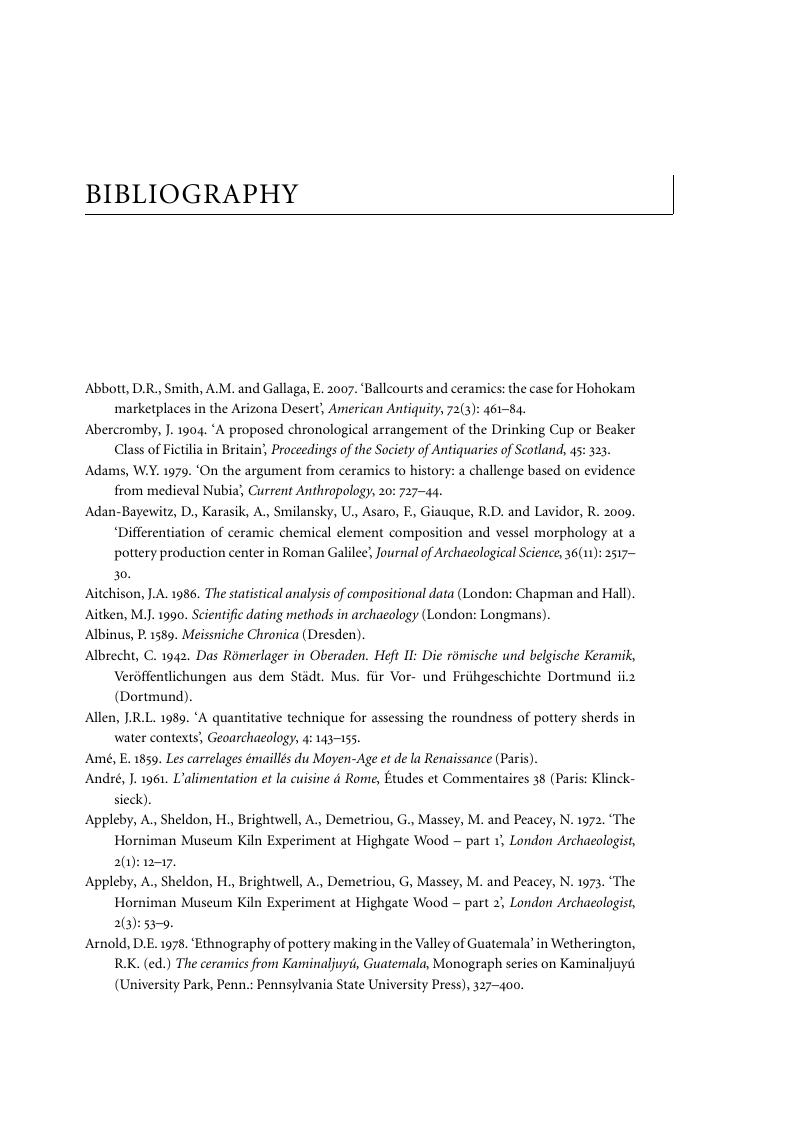Book contents
- Frontmatter
- Contents
- List of Figures
- List of Figures
- Preface
- Acknowledgments
- PART I History and Potential
- PART II Practicalities: A Guide to Pottery Processing and Recording
- PART III Themes In Ceramic Studies
- Conclusion: The Future of Pottery Studies
- Appendix 1 Suggested Recording Systems for Pottery from Archaeological Sites
- Appendix 2 Scientific Databases and Other Resources for Archaeometry
- Bibliography
- Index
- References
Bibliography
Published online by Cambridge University Press: 05 June 2014
- Frontmatter
- Contents
- List of Figures
- List of Figures
- Preface
- Acknowledgments
- PART I History and Potential
- PART II Practicalities: A Guide to Pottery Processing and Recording
- PART III Themes In Ceramic Studies
- Conclusion: The Future of Pottery Studies
- Appendix 1 Suggested Recording Systems for Pottery from Archaeological Sites
- Appendix 2 Scientific Databases and Other Resources for Archaeometry
- Bibliography
- Index
- References
Summary

- Type
- Chapter
- Information
- Pottery in Archaeology , pp. 291 - 328Publisher: Cambridge University PressPrint publication year: 2013



